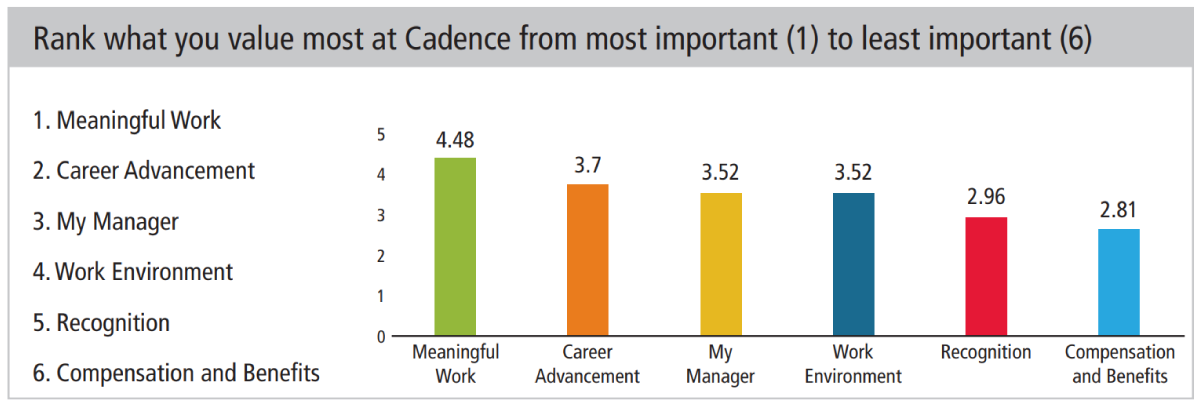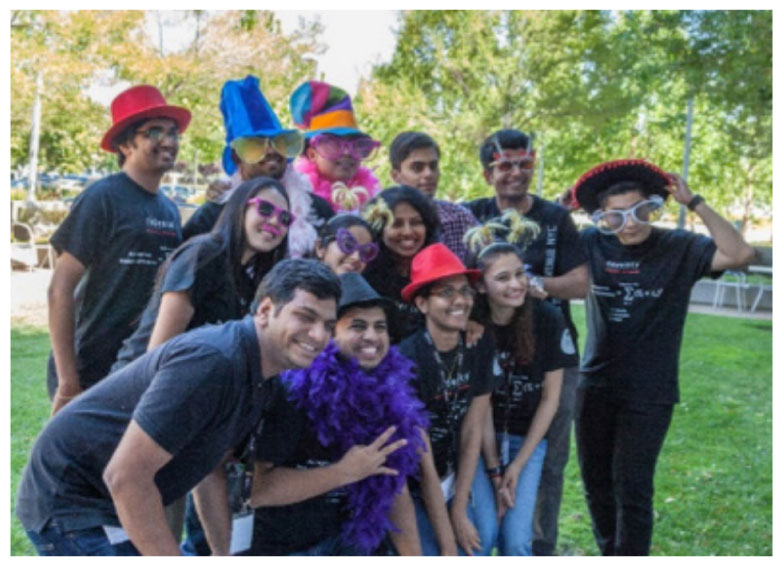White Paper
Bridging the Gap Between Industry and Academia
The purpose of the Cadence Academic Network is to promote the proliferation of leading-edge technologies and methodologies at universities renowned for their engineering and design excellence in the areas of verification, design, and implementation of microelectronic systems. Taking a four-pronged approach of recruiting, promoting the Cadence university software program, establishing academic partnerships, and promoting relevant events around the globe, Cadence facilitates the sharing of technology expertise with universities, research institutes, and industry advisors.
Overview
Introduction
In October 2007, Cadence formally introduced the Cadence Academic Network, designed for universities to work together to teach and promote Cadence tools and methodologies. Starting as a pilot program in Europe, the Cadence Academic Network has now reached more than 900 academic institutions and organizations and reaching thousands of students and professors around the globe, all while developing relationships between students, professors, and professionals in the electronic design automation (EDA) community.
The Cadence Academic Network provides a bridge between industry and academia, allowing a flow of intelligence and interest between the two, enabling universities to learn about using Cadence tools and build a network of other academic users of our products. Leveraging the expertise being developed in academia, we provide real-life challenges to designers-in-training, while they guide us in the directions academia is heading in the future—thus lowering the barriers between academia and industry.
University Software Program
The goal of the Cadence University Software Program is to grant easy access to leading EDA tools for educational institutions around the world. As the leader in EDA, Cadence is committed to give access to our world-class tools to future engineers and innovators.
The University Software Program provides the following benefits to its participants:
Networking and Communications
The Cadence Academic Network offers several methods of networking opportunities and communications, including:
Reaching thousands of students worldwide, Cadence provides an opportunity for students to be at the forefront of electronic research and innovations that are making a global impact.
University Recruiting
The current model of simply relying on academia to provide sufficient electrical engineers to sustain the industry is not reliable. It is vitally important for experienced workers to impart their knowledge to the next generation of engineers and designers to ensure that trends developed in the industry can be picked up and carried on.
Electrical engineers also agree across the board that the next generation of engineers must embrace a wider scope of topics other than simply electrical engineering. These disciplines should include computer science, mathematics, mechanical engineering, and business [1].
Because today’s students are the next generation of innovators, Cadence is committed to creating a sustainable pool of talented engineers, preparing them with the tools and training they need to thrive in the competitive semiconductor and electronics industry. Cadence recognizes that those students come from diverse backgrounds and with an array of fields of study. It has also been awarded one of the best places for Millennials to work! To meet the needs of the complicated work force of the future, Cadence offers a College Hires and Internship Program (CHIPs).
College Hires and Internship Programs
The main purpose of CHIPs is to welcome the next generation of innovators to the EDA field, giving students and recent graduates with hands-on experience, working with the latest technology in the EDA field. As part of this program, Cadence managers and interns also develop a mentor/mentee relationship, as well as establishing healthy manager/employee relationships.
This program helps interns launch their careers at Cadence, allowing them to follow their passion and contribute to innovation in a meaningful way, all while working on leading-edge projects. As one recent graduate said, “I was valued and was given meaningful work from Day one of my internship, [and] I was provided with ownership of my work. I was always motivated and encouraged to think out of the box and implement new ideas.”
When asked what our interns value most about the internship program, they respond overwhelmingly that doing meaningful work was the most important to them, followed by the opportunity for career management, as shown in Figure 1.
“Everything, right from the onboarding process to now, has been great. Cadence cares for their employees and I have an awesome manager who gives valuable feedback,” says another recent graduate. Cadence, voted by FORTUNE’s 100 Best Companies to Work For and a Great Place to Work for four years in a row, has hired more than 300 interns in North America in 2017 alone, not to mention hiring over 300 recent college graduates. Roughly a third of these interns become full-time employees at Cadence.
MIT 6-A Master of Engineering Thesis Program
Massachusetts Institute of Technology (MIT) sponsors a Master of Engineering Thesis Program, in which electrical engineers and computer scientists are matched with mentors, one from industry and one from MIT, and work on their theses together, from proposal to final submissions. At Cadence, the students serve as interns for 18 months at Cadence. This unique opportunity gives students a chance to relate the scientific and engineering principles that they learn in the classroom to current engineering problems in industry.
Duke University Technology Scholars Program
This is a unique internship experience with leading technology firms located in Silicon Valley, offering year-round support to create a pipeline of technology-savvy women who will go on to thrive across the technology industry sector.
Academic Partnerships
The Cadence Academic Network strives for building a strong relationship between academia and industry. By facilitating this exchange of knowledge by co-organizing training, workshops, and technology days; providing professional services; and helping with educational material, Cadence provides access to the latest Cadence technologies.
Using these partnerships, we at Cadence hope to identify collaborations between the following Cadence groups and academia:
Lead Institutions
Lead Institutions are “lighthouse” universities, where the academic staff have proven their expertise in education and research in Cadence technology and act as key influences to the Academic Partnerships Office at Cadence. These staff members promote their experience by connecting with other universities and by helping them to establish a professional level of technology use. Each Lead Institution maintains a Cadence Academic Network LinkedIn subgroup for information exchange with those subgroup members. They collaborate closely with Cadence on activities, such as summer schools and technology days to promote the academic use of the latest Cadence technologies. Lead Institutions represent the spirit of the Cadence Academic Network and contribute to its success.
Academic Track at CDNLive
The Academic Track at the Cadence CDNLive user conference is a forum at Silicon Valley and Europe to present outstanding work in education and research to the Cadence Academic Network contributors, Cadence technology users, developers, and industry experts. The Academic Track is fully integrated into CDNLive, as a part of all CDNLive events across the globe. The networking opportunities alone are worth the price of admission!
CDNLive is an opportunity for academia to interact with industry leaders from Cadence R&D and vice versa. It is also a venue for academic attendees to receive valuable technical updates from Cadence. Academic attendees and industry insiders can experience presentations created by Cadence technology users in the technical tracks at CDNLive. The entire conference provides a platform to exchange ideas and to discuss developments and challenges in education and research on microelectronics and related areas.
Lab Certification Program
The Cadence Academic Network offers a certification program for university labs to show the high-quality standards of their teachers and examiners. Students who have accomplished courses in certified labs will also be certified.
Events
The presence of Cadence at workshops, seminars, conferences, and symposia is only growing. At multiple locations around the world, speaker opportunities, panel discussions, paper presentations, and design contests are available for interns and academics alike. Cadence R&D employees have served on Technical Program Committees, and the Cadence Academic Network participates in career fairs and PhD forums to build a talent pipeline into the industry.
Cadence interns also know how to build a community and have fun, with multiple events available over the course of the program.
Table 1 shows a sample of the kinds of events that occur across the globe over the course of a single year, from preparing the intern for work at Cadence, through the final sendoff when the program is completed.
| Intern Prep and On-Boarding | Community | Social | Professional Development | |
|---|---|---|---|---|
Intern Manager Training Intern and Manager Social Intern Kickoff |
Full Circle Volunteer Fundraiser Drop-Off Charity Activity Intern Volunteering Day |
K1 Speed Offsite Event Battle of the Interns EMT Mixers Intern Send-Off Intern Happy Hours B2Run Summer Parties Independence Drinks Transcendental MetiTarski Kickoff Oktoberfest Bowling Office BBQs Intern Send-offs |
EDA 101 Workshop Third Annual Global Convention Career Day University Relations Cadence and IEEE CEDA Conference for Women Interns Technical Leadership Meeting Deep White Computer Arithmetic Training Cadence Evolution |
Intern Showcase Intern Mentoring Roundtable Numeric Group Intern Projects Career Progression APAC Boot Camp (ABC Training) Behavioral Leadership Technical Leadership Meeting Intern Innovation Day One Person One Team One Cadence |
In addition to these internal events, the Cadence Academic Network sponsors dozens of events around the world, including career fares, academic tracks at CDNLive and the Design Automation Conference (DAC), workshops, forums, competitions, and networking opportunities.
Conclusion
Academia is a valuable partner with Cadence. By establishing and promoting the Cadence Academic Network to institutions around the world, we can not only leverage the talent and ingenuity of academia, but we support the development of innovation using Cadence products. The Cadence Academic Network supports partnerships and collaborates across the dimensions of academia, R&D, business, research, and talent, resulting in an ecosystem primed for sustainability in the coming years. In setting up a ready-made community with the intention of networking and making connections between these academic institutions across the globe, we can maximize what is possible using Cadence products.
References
AspenCore, “The Mind of the Engineer,” Arrow Electronics, 2016.
Further Information
For further information, see the following links.


